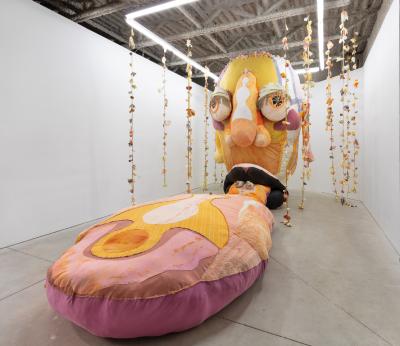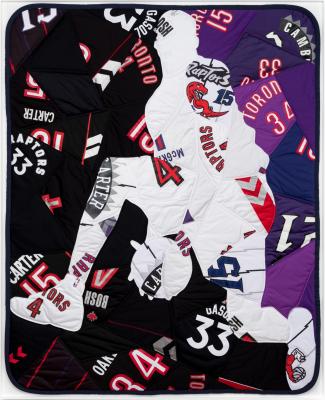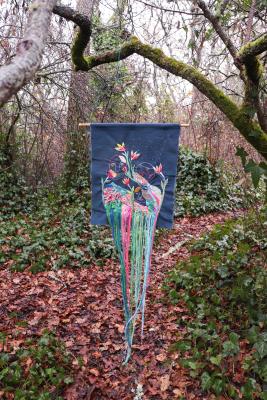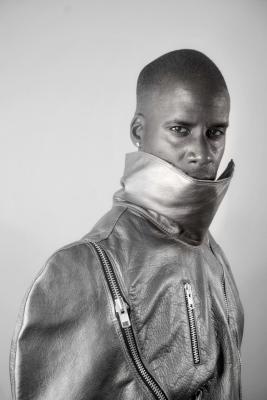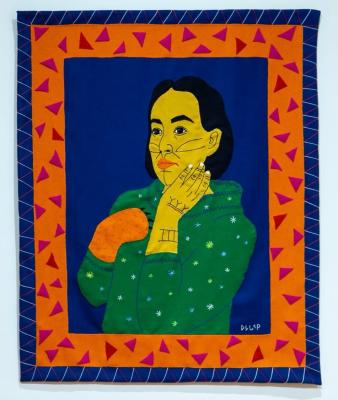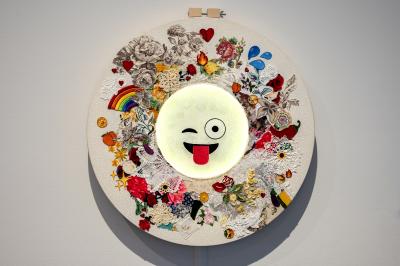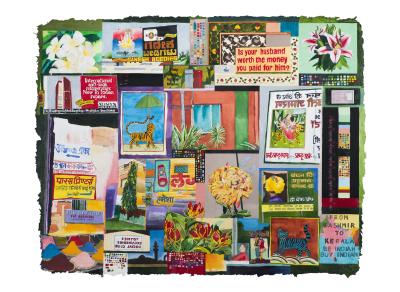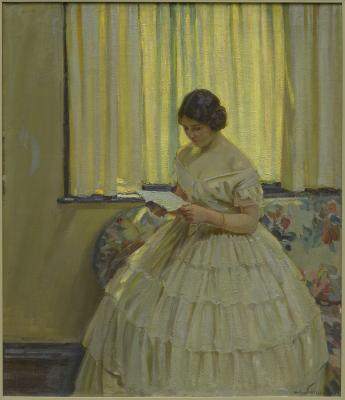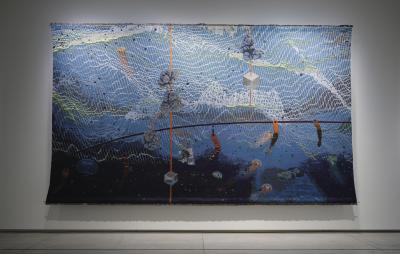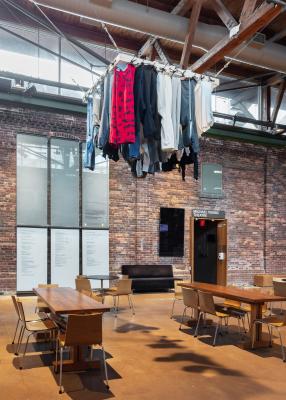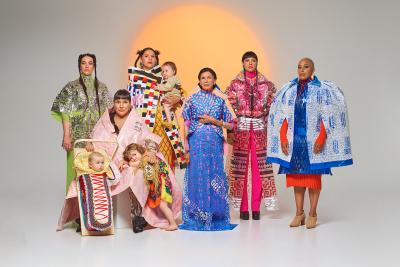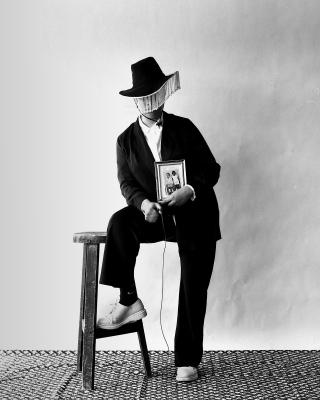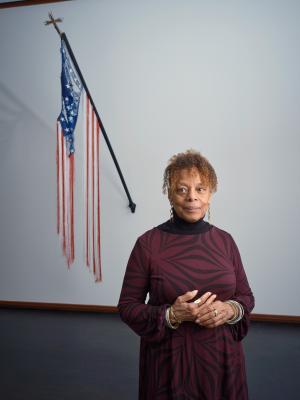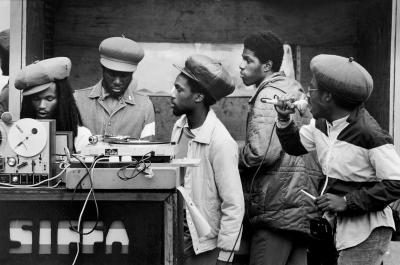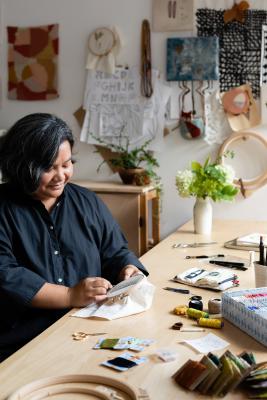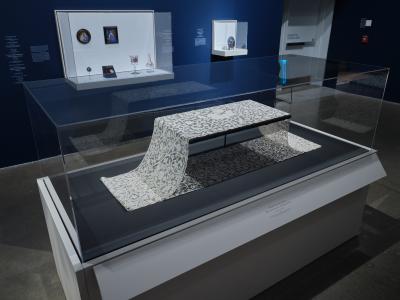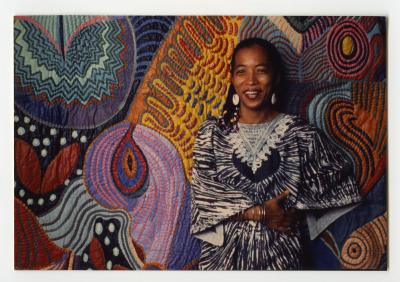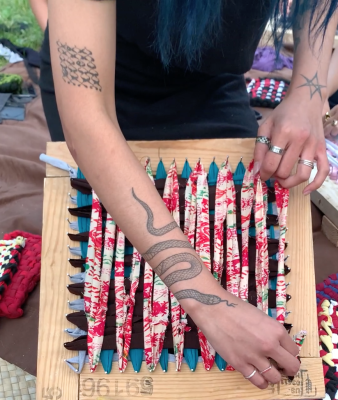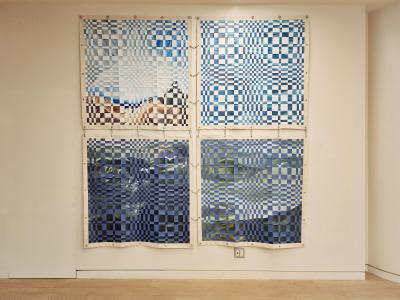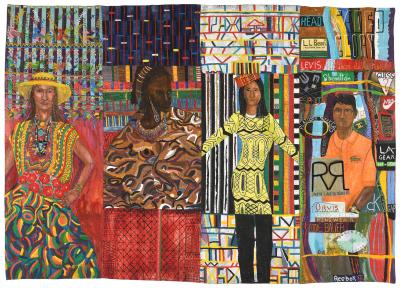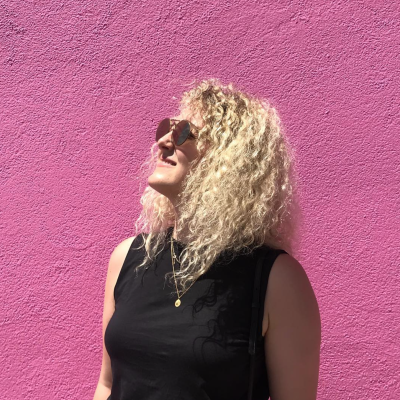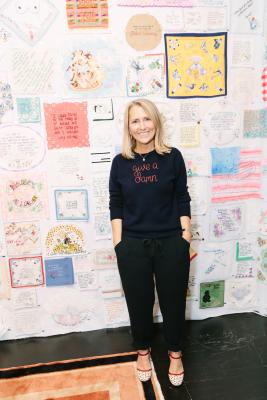Otobong Nkanga makes the midnight zone visible
On view at the AGO, Unearthed - Midnight highlights the cost of deep-sea resource extraction
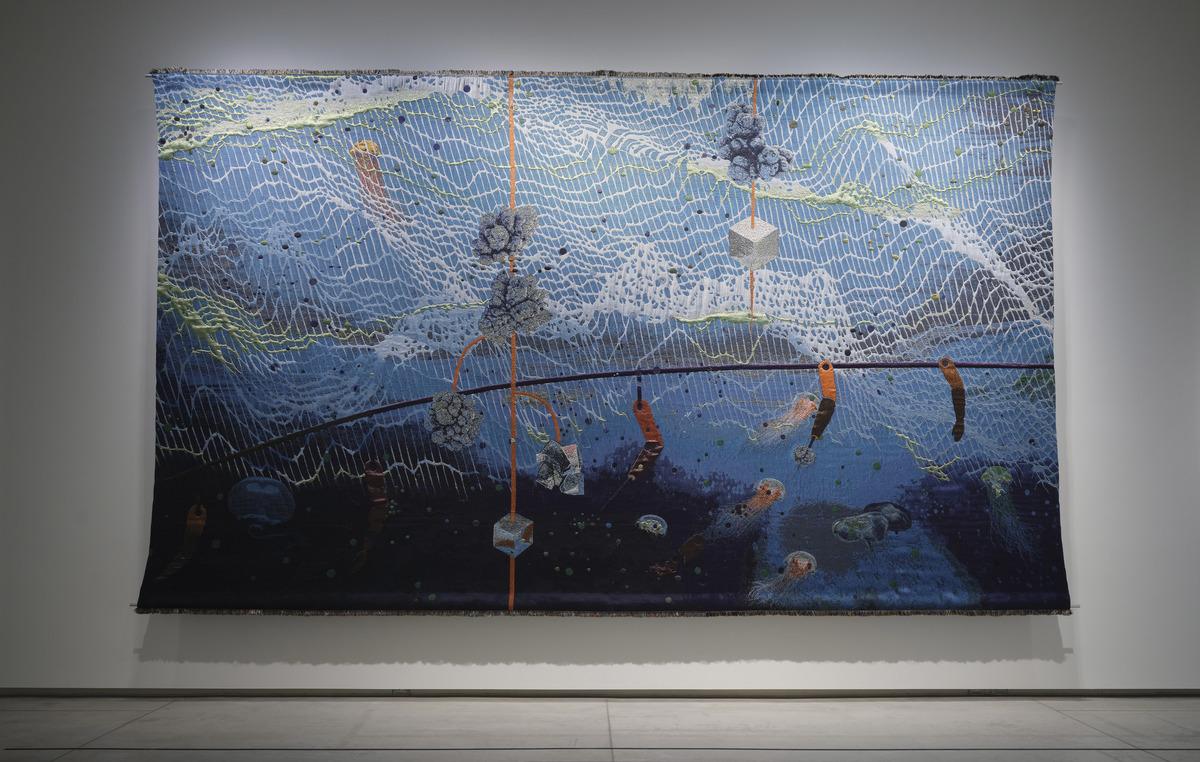
Installation view: Otobong Nkanga. Unearthed – Midnight, 2021. Woven tapestry (Yarns:Trevira, Multifilament, Outdoor Polypropylene, Elirex, Mohair, Monofilament, Fulgaren, Viscose), Overall: 346.7 × 574 cm. Art Gallery of Ontario. Purchase, with funds from the Modern and Contemporary Curatorial Committee, and the Elcy Wallace Fund, 2022. © Otobong Nkanga. 2022/2
Around four degrees Celsius, pitch-black, and unbearable pressures — the ocean’s bathypelagic zone seems inhospitable.
Yet, life persists in what is more commonly known as the midnight zone, an ocean area 1,000 to 4,000 meters below sea level. In Unearthed - Midnight (2021), currently on view on Level 4 of the AGO, multidisciplinary artist Otobong Nkanga transports viewers underwater into the transition to the midnight zone, the background of the 11 x 18-foot tapestry a gradual gradient from light to dark blue. This underwater scene is filled with multi-coloured jellyfish and air bubbles.
Aquatic life is not the only thing adapting to the conditions in the midnight zone. Humans are also present at these depths in deep-sea mining, adapting technology to extract minerals from the ocean floor. While the nature and location of deep-sea mining renders it unseen, in this work, Nkanga brings visibility to the exploitation of underwater resources.
Resource extraction foregrounds the tapestry — a large fishnet spans much of it and two orange ropes suspend vertically into the midnight zone, each carrying what looks like clusters of minerals. Another rope crosses the scene horizontally, hands and spears resembling fishing lures attached to it. The hands on the rope look rusted, two already broken off and slowly disintegrating as they fall to the ocean floor.
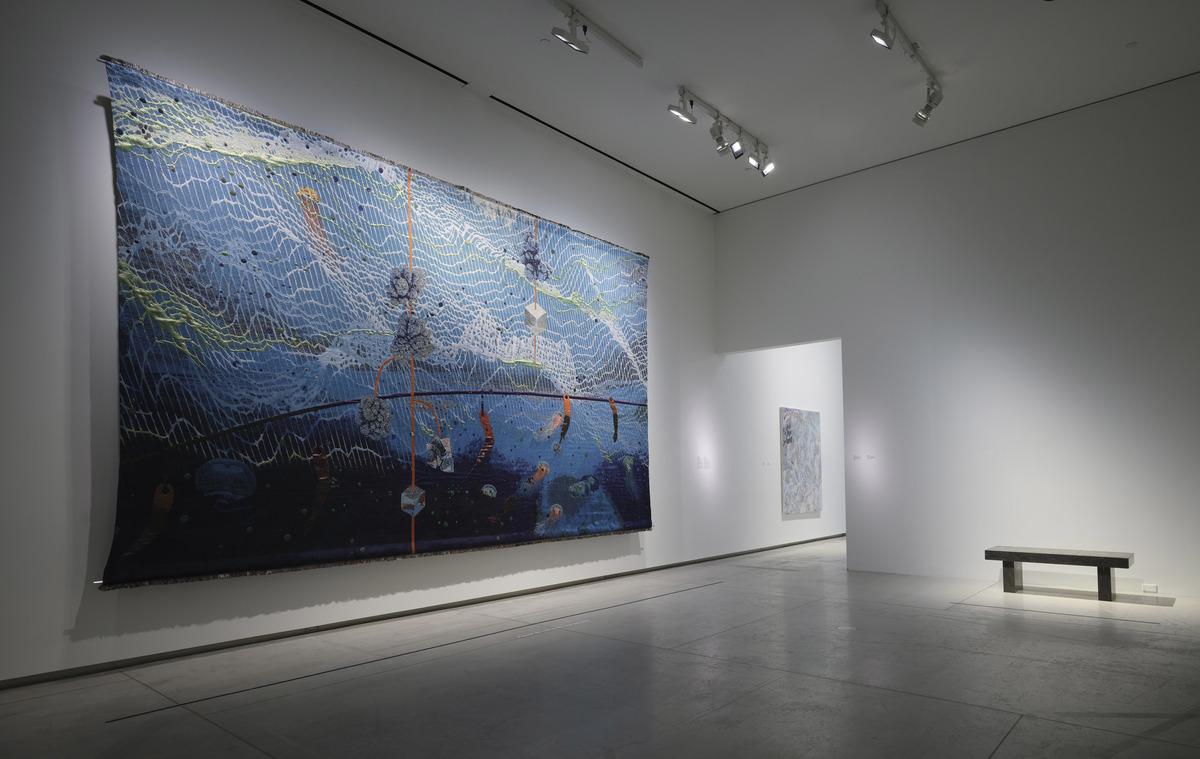
Installation view: Otobong Nkanga. Unearthed – Midnight, 2021. Woven tapestry (Yarns:Trevira, Multifilament, Outdoor Polypropylene, Elirex, Mohair, Monofilament, Fulgaren, Viscose), Overall: 346.7 × 574 cm. Art Gallery of Ontario. Purchase, with funds from the Modern and Contemporary Curatorial Committee, and the Elcy Wallace Fund, 2022. © Otobong Nkanga. 2022/2
Unearthed - Midnight continues Nkanga’s ongoing work portraying the environmental and social consequences of mineral extraction. Nkanga’s 2015 tapestry The Weight of Scars (2015) featured dismembered arms pulling on ropes, a commentary on mineral extraction in Namibia by German colonial forces. The dismembered arms are also a historical reference to the brutal reign of Leopold II, known for atrocities such as cutting the hands of Congolese labourers who failed to reach their quotas for sap collecting.
While similarly commenting on the human expense behind mineral extraction, the reappearance of dismembered arms in Unearthed - Midnight may also represent the numerous enslaved Africans who did not survive the Middle Passage across the Atlantic Ocean, either dying onboard or choosing to jump overboard to avoid being sold into slavery.
The work was one of four tapestries created for Nkanga’s 2021-2022 exhibition Unearthed at the Kunsthaus Bregenz Gallery in Austria, dedicated to exploring the “(hi)story of the elements earth and water.” The four works in the exhibition were interconnected and installed amongst the four levels of the gallery space, accompanied by a tree travelling upwards diagonally through the floor and ceiling of each level. Starting with a tapestry representing the abyssal zone of the ocean — which extends 2,000 meters below the midnight zone — the tapestries travelled upwards through a different oceanic zone on each floor, leading viewers back to scorched land on the top level.
The orange ropes seen in Unearthed - Midnight further connect all four tapestries, visible in each artwork. The exhibition aimed to emphasize the entanglement of land and water and the earth’s reliance on the ocean for survival. As viewers ascended with the tapestries, they simultaneously journeyed through various stages of exploitative practices, Nkanga aiming to highlight not only a path towards desolation but also the possibility of hope and life.
Due to its size and complexity, Nkanga worked with the TextielMuseum in Tilburg, Netherlands to create Unearthed - Midnight (and the three other tapestries) on a newly developed large-scale rapier weaving machine. With the capacity to incorporate various colours and yarn types, this recent technology allowed Nkanga to use materials that reflected the luminosity of the resources sought after by the colonial and corporate bodies she critiques.
Part of the AGO Collection, see Otobong Nkanga’s Unearthed – Midnight on Level 4 of the AGO in the Al & Malka Green Gallery (gallery 402), currently on view until September 24 with other contemporary works from the Collection that explore similar issues.
